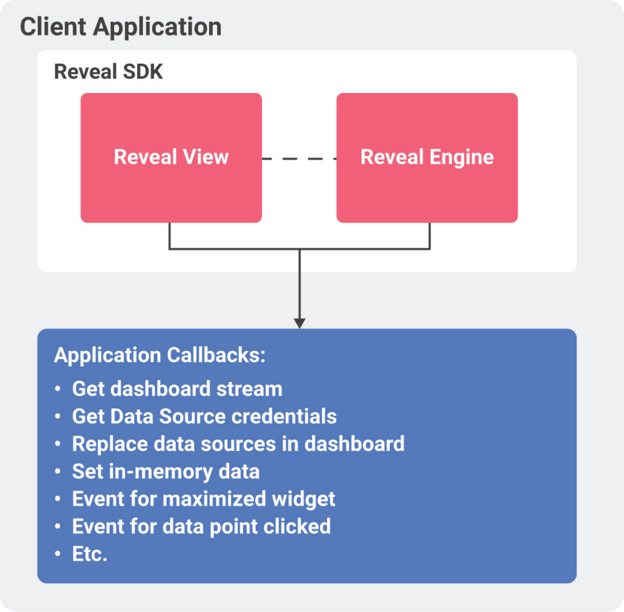
When you embed Reveal in another application (Windows WPF, Windows Forms, iOS or Android), the Reveal SDK is provided as a library or framework that is integrated into the app (the integration steps are different for each platform).
The containing app creates a RevealView object configured with the dashboard to render, this view is displayed in the containing app and then a set of callbacks can be used to customize how the dashboard is rendered and what data is used.
The RevealView component provides rendering and data transformation capabilities (automatically through the Reveal Engine), but it does not handle the storage of dashboards or credentials. The binary contents (.rdash file) holding the definition of the dashboard must be provided by the containing app. This allows the container app to handle how dashboards are used and shared by end users (for example they can be downloaded from an internal server, bundled as resources in the app’s binary, stored in file system, etc.).

When getting data from databases (or other data sources requiring authentication), usually the containing app already handles these credentials by loading them from configuration files, or storing them in a secure storage. This means that Reveal delegates the storage and handling of these credentials to the container. The app might decide to return internal credentials or prompt the user for them, if needed.